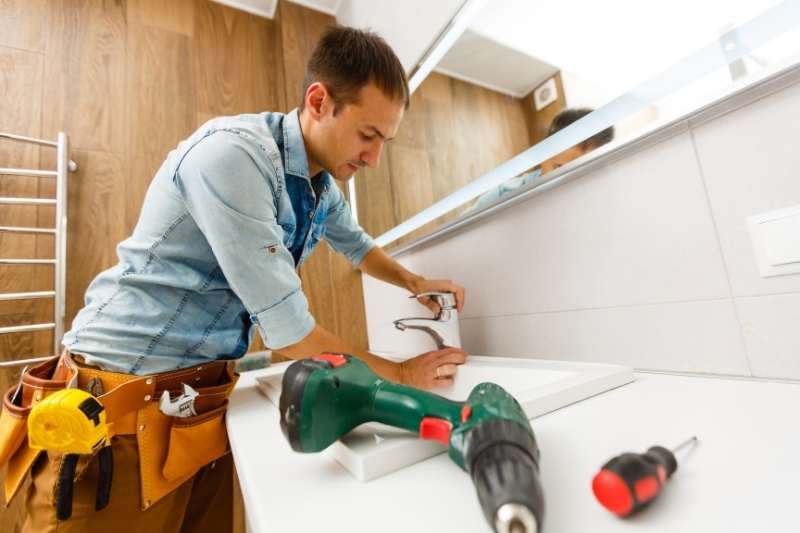
TouchPoint Property Management Santa Monica knows a lot about property management. They have a solid team of professionals who are skilled in every area of real estate. They have everything you need, from the maintenance wizards to the leasing wizards.
You can find everything you need on their website if you're looking to manage your property from one source. In addition to offering comprehensive services they also offer an array of online tools and a few cool amenities. TouchPoint's staff are knowledgeable and friendly. They will answer your questions or help you understand complex concepts. They'll also show you the ropes when it comes to approving new tenants, negotiating repairs, and managing your properties.
TouchPoint, despite being a small company has earned a solid reputation for delivering top-quality service.
FAQ
Can a handyman fix my leaking faucets
While a handyman is capable of handling minor repairs, they will not be qualified to do major projects like wiring up a house or installing custom-made cabinets. However, a handyman is capable of doing minor home improvement projects.
Where are handymen from?
There are thousands upon thousands of handymen all over the U.S. but nearly none started as contractors. The majority of handymen started their careers as tradesmen and learned how to complete apprenticeships. They are often skilled and knowledgeable, making them valuable assets for any company.
How many hours is it typical to complete a DIY project of this nature?
An average DIY project takes between two and four hours. The difficulty and complexity of the project will affect how long it takes.
How often should I employ a handyman to help me?
It depends on the nature and scope of your project. For instance, if you need a simple fix-it job done, such as installing a light bulb, then you might only need to call one handyman per week. But, if you have a lot to remodel, you may need multiple handymen.
Statistics
- With a strong housing market, the handyman and general maintenance worker industry are expected to grow by nearly 10% in the next decade. (housecallpro.com)
- More than 20% of homes in America have outdoor living spaces, including decks and patios. (mrhandyman.com)
- Another estimate was that the market in the United States was $126 billion and was increasing by about 4% annually. (en.wikipedia.org)
- A franchise was approximately $110,000 with a franchise fee of $14,900, according to a spokesperson for a national handyman franchise. (en.wikipedia.org)
- An estimate was that in 2003, the market for home maintenance and repair spending was up 14% 2001 to 2003. (en.wikipedia.org)
External Links
How To
How to Replace a Broken Tile
Step 1 – Remove the tiles.
Remove the old tiles from your flooring and put them aside. You'll want to keep these intact if you use them later. Note which pieces are missing or damaged to avoid having to search for replacements.
Step 2 -- Choose New Tiles
Take a look at some different options available for tile replacement.
-
Locate a replacement tile that is the same as the one you just removed.
-
You can use the measurements taken when you removed the tile to locate a matching piece. This will make it much easier to find the right size without measuring again.
-
You should look for different colors, patterns and textures.
-
Consider which grout you would like to use, if any. Some prefer a solid color, while others like mixing it up.
-
It is important to ensure that the tile you choose resists moisture.
-
Also, think about where you want to place your new tile. This will help you save time and money.
-
Once you've found the tile that suits your needs, you can place your order online.
Step 3: Install the tiles.
For your new tiles, use the same method that you used to install them. Be careful to align them properly so they fit together perfectly.
Step 4 - Clean up
Be sure to sweep up all debris from the floor before applying the final protective layer.
This will prevent dirt and dust from settling into the cracks between the tiles that could cause mold.
Step 5 – Sand down the floor
After you have cleaned everything, sand the floor to remove any particles that were left from the previous step.
Step 6 -- Finish Off
Once the floor is smooth, apply the protective coatings. It is important to wait before you apply the protective coatings.
To protect your floors from stains, you can use "damp-and dry" products.
It will not address all problems that may arise once your tiles have been installed. If you have children, an anti-slip coating may be a good idea.
Finally, do not forget to keep the protective sealer on for several more weeks before you move back into your home.